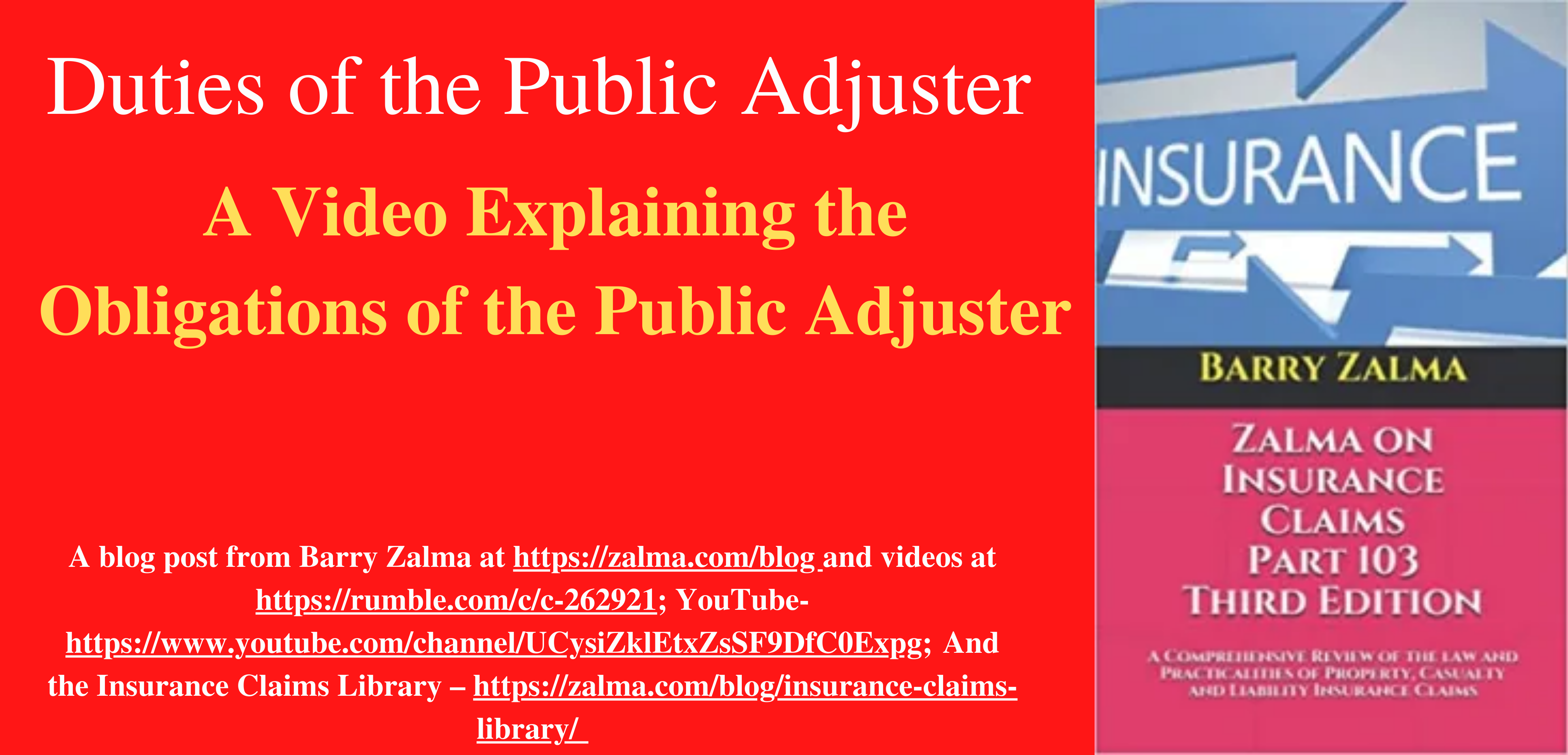-
News Feed
- EXPLORE
-
Pages
-
Groups
-
Events
-
Blogs
-
Marketplace
-
Offers
-
Jobs
-
Developers
Duties of the Public Adjuster

A Video Explaining the Obligations of the Public Adjuster
Read the full article at https://www.linkedin.com/pulse/duties-public-adjuster-barry-zalma-esq-cfe and see the full video at https://youtu.be/hjEzVdQdmUY and at https://rumble.com/vnwgk8-duties-of-the-public-adjuster.html and at https://zalma.com/blog plus more than 3900 posts.
Most policyholders do not have the in-house capability to investigate, evaluate, and negotiate significant property insurance losses. While some losses, such as a small fire loss requiring only minor repairs, may be dealt with easily, others, which involve more complex damages and different potential causes of loss, are much harder to assess. Resolving them may require expertise in understanding the scope of coverage provided by the applicable property insurance policy, scientific or other specialized background to determine the cause of a specific loss, the ability to determine the cost to repair or replace the damaged property, and the calculation of the amount of a time element (business interruption) loss.In such cases, the policyholder may wish to engage a public insurance adjuster (PA). PA’s are licensed by almost every state and their contract forms must be approved by the state.
All PAs claim to be experts on property loss adjustment. Most are. They represent only policyholders in fulfilling the duty to prepare, file, and adjust insurance claims. The PA should handle every detail of the claim, working closely with the policyholder and the insurer to obtain a prompt and reasonable settlement.
‘PAs invariably charge a contingency fee. When seeking an assignment, the PA will present the contingency fee to the insured as a fait accompli. Every person seeking the service of a PA must be aware that the PA’s fee is negotiable.
The insured should negotiate with the various representatives of PA firms who flock to fire and other loss sites, try to obtain the lowest contingency as possible. Negotiating with a PA is much like negotiating to buy a vase at an estate sale, one never pays the asking price. If there are multiple representatives from PA firms seeking to provide service it is appropriate to play them against each other to obtain a fair contingency since whatever the PA takes will be funds not available to repair the property.
For a major loss, more than one PA will arrive at the site seeking a contract. Rates can be negotiated from a low of 3% to a high of 40%, although the average charge for a run-of-the-mill loss is 10% to 15%. When considering a PA, the insured must take into account the skill, experience and reputation of the firm. The insured must also understand the fact that even if the insurer pays the full amount of the loss, the cost of the adjuster’s fee may not leave enough funds to fully repair the damaged structure.
We are 100% funded for October.
Thanks to everyone who helped out. 🥰
Xephula monthly operating expenses for 2024 - Server: $143/month - Backup Software: $6/month - Object Storage: $6/month - SMTP Service: $10/month - Stripe Processing Fees: ~$10/month - Total: $175/month
- Art
- Causes
- Crafts
- Crime
- Dance
- Drinks
- Film
- Finance
- Fitness
- Food
- Games
- Gardening
- Health
- Home
- Literature
- Music
- Networking
- Paranormal
- Other
- Politics
- History
- News
- Party
- Science
- Religion
- Shopping
- Sports
- SyFy
- Politically Incorrect
- Philosophy
- Theater
- Technology
- Wellness



